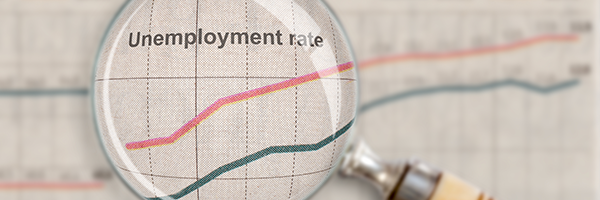
Will we get “inflation volatility” from tomorrow’s CPI report?
Economists expect the Consumer Price Index (CPI) to have edged lower in August in tomorrow morning’s report.

Economists expect the Consumer Price Index (CPI) to have edged lower in August in tomorrow morning’s report.

Federal Reserve Chair Jerome Powell didn’t surprise Wall Street with his speech today at the (virtual) Jackson Hole central bankers conference. Instead he left the Federal Reserve on a path to begin reducing its purchases of Treasuries and mortgage-backed assets from the current $120 billion a month rate sometime in 2021. Powell said added that at the Fed’s last policy meeting in July, he “was of the view, as were most participants, that if the economy evolved broadly as anticipated, it could be appropriate to start reducing the pace of asset purchases this year.” Powell did not lay out a clear timeline for when the Fed could change its policies, or how the Fed could structure its taper. And most importantly for Wall Street he didn’t push ahead with a schedule for raising the central bank’s benchmark interest rate from the current 0% to 0.25% range.

Investors and traders are hedging their bets–a little–ahead of tomorrow morning’s speech by Federal Reserve chair Jerome Powell at the central banker’s (virtual) Jackson Hole jamboree. The worry is that Powell will says something relatively concrete about the Fed’s plans for decreasing its monthly $120 billion purchase of Treasuries and mortgage-backed assets. An end to those purchases is a prerequisite to any move by the Federal Reserve to raise interest rates. So any move on the purchase schedule would be an indicator of the Fed’s thinking about when/if to raise benchmark interest rates now at 0% to 0.25%. The odds on bet is that the Fed chair won’t say anything–something Fed chairs are very good at tomorrow–and that the Fed’s Open Market Committee won’t say anything of substance at its September 22 meeting.

With Federal Reserve chair Jerome Powell scheduled to give a talk at the (virtual) Jackson Hole central bankers’ gab fest on Friday morning, Treasury yields moved slightly higher today, August 25. The yield on the 10-year Treasury climbed 5 basis points to 1.35%. I don’t think I’d read much into this move.

Today the Standard & Poor’s 500 gained just 0.15%. Trying volume was really light on the day at 1.735 billion shares. Normal average daily volume is almost twice that at 3.404 billion shares.
Just about what I’d expect from a stock market where everyone is waiting to hear what, if anything, Federal Reserve chair Jerome Powell will say at the (virtual) Jackson Hole central bankers gathering on Friday morning. But, on the other hand, volumes for the Robin Hood/meme stocks soared. GameStop (GME) saw 14.3 million shares traded when average volume is 5.4 million.

The short story is that no one–not the guy who hawks newspapers and candy bars on my corner, not the Wall Street analysts setting target prices and earnings estimates, and not the world’s central bankers–knows how big a bite the surge of infections due to the Delta Variant of Covid-19 will take out of global economic growth. Or which sectors will skate by and which will get slammed (although if you see this as being a tough time to run an airline or a cruise company or an entertainment park or venue, you’re probably right.) And despite the pronouncements of some on Wall Street no one knows how much or any of any downturn in economic growth or earnings is priced into stocks. (Although, again, if you say Not much! is priced in since stocks continue to trade near all-time highs, I think you’ve probably got a point.) Which means, for better or worse, everybody is your own economist right now.

This weeks Jackson Hole central bankers’ gabfest will test of exactly how nervous the financial market is about a shift in Federal Reserve Policy.

This quote on Bloomberg today caught my eye. It may be a crucial explanation for why the market is so unfazed by the possibility that the Federal Reserve might announce a schedule for paring back its $120 billion in bond purchases either at next week’s central bankers speech fest or at the Fed’s own mid-September meeting.

Initial unemployment claims at regular state unemployment programs doped to 348,000 for the week ended August 14. That’s down from a revised 377,000 in the prior week and below the 364,000 projected by economists surveyed by Bloomberg. The four-week moving average for new climbs fell by 19,000 to 377,750. The drop was the fourth straight weekly decline and took the weekly number down to the lowest level since March 2020. Just for reference, though, new claims for unemployment averaged 200,000 a week before the Pandemic.

Very little mystery about what sent stocks lower today, August 18. As of 2:10 p.m. New York time the Dow Jones Industrial Average was essentially flat for the day with a tick down of just 0.05%. By 2:16, after the release of minutes from the Federal Reserve’s July 28 meeting the index had dropped to a loss of 0.44% on the day. The downward trend continued to the close with the Dow off 1.08% on the day (or 382 points) and the Standard & Poor’s 500 lower by 1.07%. The NASDAQ Composite was down 0.89% and the NASDAQ 100 closed off 0.97%. The small cap Russell 2000 index lost 0.84%. The iShares MSCI Emerging Markets ETF (EEM) gained a scant 0.16%. So what in the minutes spooked stocks?

A report in this morning’s Wall Street Journal concludes that Federal Reserve officials are moving toward agreement on a timetable that would see the central bank begin scaling back its easy-money policies in about three months if the economic recovery continues.

Back in 2018 the Federal Reserve started to run down its valance sheet out of concern that its asset pile had grown so large that the central bank was in danger of becoming the market for things like Treasuries and mortgage-backed assets. (For some of the dangers in that state see the Bank of Japan, which does “own” the market for government debt.) Over the next two years the Fed ran its assets down to $3.75 trillion from $4.4 trillion. If you haven’t been paying attention, you might have missed the steady increase in the Fed’s holdings to a whopping $8.2 trillion in Treasury bonds and mortgage-backed assets.